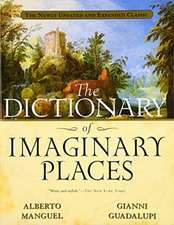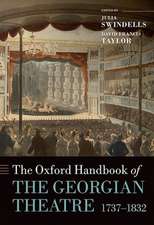The Uses Of Autobiography
Editat de Cambridge. Julia Swindells Homerton Collegeen Limba Engleză Paperback – 27 noi 1995
| Toate formatele și edițiile | Preț | Express |
|---|---|---|
| Paperback (1) | 446.58 lei 43-57 zile | |
| Taylor & Francis – 27 noi 1995 | 446.58 lei 43-57 zile | |
| Hardback (1) | 1165.38 lei 43-57 zile | |
| Taylor & Francis – 27 noi 1995 | 1165.38 lei 43-57 zile |
Preț: 446.58 lei
Nou
Puncte Express: 670
Preț estimativ în valută:
85.48€ • 92.88$ • 71.85£
85.48€ • 92.88$ • 71.85£
Carte tipărită la comandă
Livrare economică 21 aprilie-05 mai
Preluare comenzi: 021 569.72.76
Specificații
ISBN-13: 9780748403660
ISBN-10: 0748403663
Pagini: 238
Dimensiuni: 156 x 234 x 18 mm
Greutate: 0.39 kg
Ediția:1
Editura: Taylor & Francis
Colecția Taylor & Francis
Locul publicării:Oxford, United Kingdom
ISBN-10: 0748403663
Pagini: 238
Dimensiuni: 156 x 234 x 18 mm
Greutate: 0.39 kg
Ediția:1
Editura: Taylor & Francis
Colecția Taylor & Francis
Locul publicării:Oxford, United Kingdom
Public țintă
Postgraduate and UndergraduateRecenzii
'This book could be of great use in the classroom (probably at the graduate level) and would serve as a useful reference book for people working in community settings, especially when teaching social skills.' - Disability Studies Quarterly
Cuprins
Chapter 1 Introduction, Julia Swindells; Chapter 2 Theories of Autobiography; Part 1 The face of autobiography, Laura Marcus; Part 2 Why does an author who apparently draws so much on autobiography seem committed to ‘alienating’ the reader?, Jane Unsworth; Chapter 3 Gender, Militancy and Wartime; Part 3 ‘She who would be politically free herself must strike the blow’: Suffragette autobiography and suffragette militancy, Maroula Joannou; Part 4 ‘Dear Laughing Motorbyke’: Gender and genre in women’s letters from the Second World War, Margaretta Jolly; Chapter 4 Making Sense of the Self: Cultural Identities Under Pressure; Part 5 A strategy for survival, Clare Blake; Part 6 Cultural identities under pressure, David Whitley; Chapter 5 Constructing the Self, Inventing Africa; Part 7 Gender and iconography in autobiographies of Nelson and Winnie Mandela, Cheryl-Ann Michael; Part 8 Memory, history and ‘faction’ in Wole Soyinka’s Aké and Zsara, Ato Quaysorz; Chapter 6 Autobiography, Authenticity and Nineteenth-century Ideas of Race; Part 9 Sentimentality and the slave narrative: Frederick Douglass’ My Bondage and My Freedom, Sarah Meer; Part 10 Speculating upon human feeling: evangelical writing and Anglo-Jewish women’s autobiography, Nadia Valman; Chapter 7 Sisterhood and Self-censorship in the Nineteenth Century; Part 11 Writing herself: The diary of Alice James, Janet Bottoms; Part 12 Gender negotiations in nineteenth-century women’s autobiographical writing, Pam Hirsch; Chapter 8 The Educative ‘I’ in Nineteenth-century Women’s Autobiographies; Part 13 Catharine Cappe of York (1822), Ruth A. Symes; Part 14 ‘What I earnestly longed for…’: Elizabeth Missing Sewell, writing, autobiography and Victorian womanhood, Brian Ridgers; Chapter 9 Autobiography and Educational Change, Bobbie Wells, Peter Cunningham; Chapter 10 Life Histories, Adult Learning and Identity; Part 15 Writing about learning: Using Mass-Observation educational life-histories to explore learning through life, Alistair Thomson; Part 16 Motives, mature students, the self and narrative, Mary Lea, Linden West; Chapter 11 Assumed Identities: Feminism, Autobiography and Performance Art, Claire MacDonald; Chapter 12 There are stories and Stories: An Autobiography Workshop, Gillie Bolton, Morag Styles; Chapter 13 Conclusion: Autobiography and the Politics of ‘The Personal’, Julia Swindells;
Notă biografică
Julia Swindells works in the English Department of Homerton College, Cambridge. Her publications include Victorian Writing and Working Women, The Other Side of Silence, 1985, and What's Left? Women in Culture and the Labour Movement, with Lisa Jardine, 1990.













